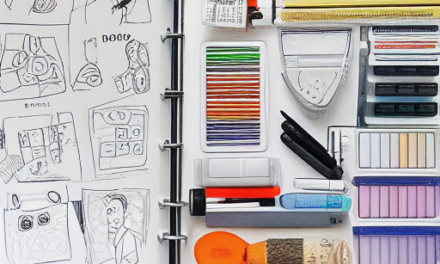The best way to organise notes is to use a system that divides them into main categories. For instance, students might organise their notes by classes, professors, and assignments. For professional people, the categories might be projects, clients, and deadlines. For personal knowledge management, people might organise their notes by hobbies, travel, projects, or other categories. Each of these categories can then have subcategories.
Mind mapping
Mind maps are a powerful way to organise your notes. They allow you to organize large amounts of information in an easy-to-understand and visually-appealing manner. Mind maps are also great for brainstorming ideas and consolidating research. They also help you learn and remember complex information.
Mind maps usually contain a central idea and branches that connect to it. They should be clear and easy-to-read, and you can use different colors to denote the strength of the associations. The best part about mind mapping is that you can share it with multiple collaborators and keep it updated as you go.
Another advantage of mind maps is that they make it easier to capture information. Instead of writing a long list of notes, people can create a mind map by connecting ideas to create a clear overview of the information. This allows people to review the information easily later. Furthermore, it is easier to share notes and other documents with others.
When creating a mind map, you should outline the key ideas, subtopics, ideas, comments, and other important information. You should not put all the information in one location; rather, you should move it to different subbranches, depending on its importance. Mind maps can be created using traditional pen and paper or by using modern mind mapping tools.
Charting Method
The Charting method is a note taking technique which uses columns to organise information. It works particularly well for lessons that contain a lot of facts and relationships between various topics. The information can be organised in columns, each with a heading. Notes should be arranged within the respective columns and grouped according to their importance. This method will help students to organise their notes and prepare for examinations and assignments in a much easier way.
The Charting method can be used both with pen and paper, and with a spreadsheet or word processor. The main advantage of using this method is its ease of use. You don’t need to have any prior knowledge of charting to create a chart. You can also use a chart template that can be used repeatedly, saving you the trouble of creating a chart from scratch.
The Charting method is a visual way to organise your notes. You can view your notes and search for the information you want right away. However, it can be time-consuming, especially when you are taking notes during a lecture. Charting works best for classes that consist of a uniform content or lectures that contain facts. It also works well for testing your memory but is not suited for abstract ideas.
In addition to reducing notes, the Charting method can save you a lot of time. Using the Charting method can significantly cut the time you spend reviewing and revising your notes. For example, the use of charts in lectures is more efficient than the traditional method of taking notes while you are sitting in the lecture. Moreover, it can be used in a variety of situations.
Table of contents
A table of contents is a handy way to organise your notes. A table is typically comprised of four rows and columns. The table should contain the subheadings and page numbers of the various pages within the document. Creating a table of contents is helpful if you want to reference the contents of your notes at a later stage.
When you create a table of contents, you should start by listing all the major headings in chronological order, inserting subheadings and filling in page numbers. This helps you easily navigate to different sections of the notes. You should also make sure to add a title to your table of contents.
Writing down your notes is another great way to organise them. It allows you to learn more effectively and identify connections between different topics. It also helps you remember the information better. If you take notes in a concise, logical fashion, you will be better able to recall the information. Make sure to include key information like the date, main topic, page numbers, and other pertinent details. This will save you time while reviewing your notes.
Pull-out features
Whether you’re writing in a digital or analog notebook, you should use pull-out features to organise your notes. These can be as simple as a box, circle, squiggly underline, or any other type of visual draw-attention. Depending on the size and complexity of your notes, you might choose between one and three pull-out features.
OneNote
When you’re organising your notes in OneNote, you’ll notice a box around the data. You can resize, align, and move this box to adjust the readability of your notes. You can also select different styles, and highlight certain sections of text. You can customize the font and size of text with OneNote’s formatting tools.
OneNote is a powerful productivity tool that makes it easy to organize your notes. Its flexible format allows you to store anything from contact details to a gallery of business cards. It even has an option to store a list of online subscriptions. Whether you need to organise a to-do list, a list of your favourite websites, or a list of all your notes and tasks, OneNote makes it easy.
OneNote allows you to create multiple notebook sections. These sections appear as tabs under the notebook name, or as horizontal lines across the top of the screen. For example, you can have separate notebook sections for each class or subject. OneNote also allows you to label each page separately, so that it’s easy to find what you’re looking for.
OneNote also allows you to create links between pages or sections. You can create a link to a specific page by right-clicking on it and selecting Copy link. You can then paste the link into another page. You can also switch pages by using the navigation buttons.
Using a note-taking app
Using a note-taking app is a great way to organise your notes. Most note-taking apps allow you to create folders, and you can also create shortcuts to certain folders or create favorites for specific notes. This makes it easy to find and organise your notes, and it also means you can find and quickly edit them.
Note-taking apps can also be used to store documents. Some note-taking apps can back up files to a cloud storage account, making them accessible anywhere. Simplenote, for instance, can back up notes to your computer and make them available online. It’s also free and cross-platform, which makes it a great option for those who don’t want to spend a lot of money on a note-taking app. Another great note-taking app is Ulysses. Not only can you easily organize your notes into folders, but Ulysses will also let you convert them into articles.
The best note-taking app should include advanced features and cover all aspects of note-taking. This will save you time and effort. It should also be comfortable and easy to use. The best note-taking app will also feature cross-platform functionality.
Evernote is another popular note-taking app that is designed for the purpose of organisation. This app works on both iOS and Android, and it has a rich text editor and markdown support. It also offers photo and video support, a PDF attachment, web clipper, and a built-in scanner. It also allows multiple workspaces and a feature that lets you share your notes with others. You can also search your notes through images, Word files, and HTML files.













